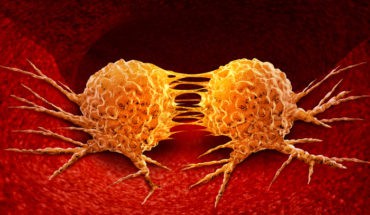Long-term safety of radiotherapy in fewer doses for patients with early breast cancer demonstrated in 10-year study
A lower total dose of radiotherapy delivered in fewer but larger doses is as safe in the long term as breast cancer radiotherapy courses giving multiple small doses, according to the final results of a 10-year study.
The findings show that five larger radiotherapy doses after surgery – once-a-week sessions for five weeks instead of daily radiotherapy over the same time, totalling 25 doses – cause similarly low rates of side-effects in women with early-stage breast cancer in the long run.
Fewer treatment sessions particularly benefit patients at low risk of relapse who cannot tolerate daily radiation over long periods of time because of frailty or other chronic conditions. The 10-year study offers reassurance to these women over the long-term safety of the approach.
The 10-year results of the FAST trial, led by The Institute of Cancer Research, London, and funded by Cancer Research UK, are published Tuesday 14th July 2020 in the Journal of Clinical Oncology.
The FAST trial, launched in 2004, compared radiotherapy schedules consisting of fewer but larger fractions overall, while decreasing the total dose of radiation, in order to see which course was best at reducing side-effects.
The three-year results of the FAST trial were published in 2011 and showed that reducing the number of radiotherapy fractions to five was feasible and safe in the short term.
Since then, FAST has informed the design of the FAST-Forward trial, also led by The Institute of Cancer Research (ICR), which looks at delivering the five fractions of radiotherapy in a single week. This has also been found to be safe and effective.
The 10-year results from the FAST trial now confirm that a treatment strategy involving fewer doses and fewer visits to hospital is as safe in the long term, since side-effects remain low a decade later.
Radiotherapy uses X-rays to destroy cancer cells that may be left behind after breast cancer surgery. As a consequence, having radiotherapy after surgery lowers the risk of the cancer coming back – but the radiation can affect healthy tissue around the site of the surgery and on rare occasions can result in serious side effects.
Some 915 women from 19 centres across the UK who had early-stage breast cancer participated in the FAST trial. Researchers assigned women to one of three different courses of radiotherapy following breast cancer surgery – a regimen of daily doses and two courses delivering five larger doses once weekly, all over the same time period of five weeks.
After completing the radiotherapy regimens, women were assessed annually for up to 10 years by researchers for side effects to healthy breast tissue – including hardening of the breast, swelling, skin reactions and changes in breast size.
The standard radiotherapy regimen consisted of the now outdated international standard of 50 Gray (Gy) of radiation, divided into 25 daily doses of 2 Gy, delivered every day over five weeks. The trial treatments consisted of 30 or 28.5 Gy delivered once a week for five weeks in fractions of 6 or 5.7 Gy.
Moderate or severe long-term effects were low across the three treatment groups and the most common effect was breast shrinkage. The researchers observed no changes or minor changes in healthy breast tissue in 86 per cent of all women in the trial at the 10-year time point.
Moderate or marked effects were two thirds more likely in women on the 30 Gy regimen than with 50 Gy – but the women on the 28.5 Gy and 50 Gy regimens had a similar risk of moderate or marked effects. Delivering 28.5 Gy in five fractions as a once-weekly schedule is therefore safe in the long-term for certain patients, especially those who are frailer.
Study co-leader Professor Judith Bliss, Professor of Clinical Trials at The Institute of Cancer Research, London, and Director of its Cancer Research UK-funded Clinical Trials and Statistics Unit, said:
“After undergoing surgery to remove breast cancer, patients usually undergo weeks of radiotherapy. The aim of the FAST trial was to figure out if using fewer fractions overall, with careful consideration of the total dose, would reduce the side effects observed.
“Our initial results showed that when the total dose is adjusted appropriately it is safe to deliver radiotherapy in fewer doses and now we can confirm that this is still the case 10 years down the line.
“These findings have supported a change in clinical practice that is already helping relieve pressures on the NHS – and it is great to see that after so many years, side effects from fewer but larger doses of radiation are still low.”
Professor John Yarnold, Professor of Clinical Oncology at The Institute of Cancer Research, London, and Clinical Oncologist at The Royal Marsden NHS Foundation Trust is chief investigator of the FAST trial. He said:
“Our findings support treatment options that are more convenient for patients who cannot tolerate long courses of daily radiation, without increasing the risk of long-term side effects.
“The FAST trial confirms the safety of a radiotherapy course consisting of a lower total dose of radiotherapy delivered in five fractions of radiation. FAST has also laid the groundwork for the FAST-Forward trial, testing an even shorter treatment course of five fractions of breast radiotherapy delivered in a single week, which is likely to become a UK standard for patients with early breast cancer.
“People are increasingly living longer with their cancer thanks to smarter, kinder treatments – so establishing long-lasting safety of treatments is of utmost importance in order to help them live well with the condition.”
Professor Murray Brunt, Professor of Clinical Oncology at the University Hospitals of North Midlands and University of Keele, who is joint first author of the study, said:
“The FAST trial identifies a five-fraction once-a-week regimen that is equivalent to daily treatment over the same time period. The follow-up to 10 years is important in establishing the principle of a five-treatment option.
“For patients unable to attend daily this offers an alternative much more convenient once-a-week treatment option that is attractive to both patients and their carers.”
Joyce Charlton volunteered to be part of the FAST trial while being treated for breast cancer at the University Hospitals of North Midlands in Stoke-on-Trent. She commented:
“I was diagnosed with breast cancer in 2005, when I was approaching my 66th birthday. My oncologist, Professor Murray Brunt, encouraged me to join the FAST trial. I was scared and nervous at the time but, looking back, I can confidently say joining the trial was the best decision I could have made.
“After undergoing surgery, I received one of the shorter radiotherapy courses and went into hospital once a week for five weeks. I felt tired, but didn’t experience any notable discomfort immediately after treatment. A few months later, my scans came back clear and I have remained cancer-free ever since.”
Professor Arnie Purushotham, Cancer Research UK’s senior clinical adviser, said:
“Sparing women unnecessary treatment is always good news. And this study in women with early stage breast cancer, shows that a lower dose given weekly should be just as effective for some patients as a higher weekly dose.
“Daily visits to hospital can be difficult for some patients who may be frail, have other illnesses, or live far from hospital. Ultimately, it’s important that we keep doing research which can give patients a better quality of life.”
- Gut microbiome could delay onset of type 1 diabetes - 3rd April 2025
- The da Vinci 5 Robot Is Set To Transform Bariatric Care: - 31st March 2025
- Beyond money: the hidden drivers fuelling child food insecurity - 31st March 2025






